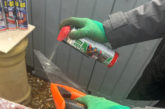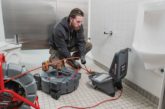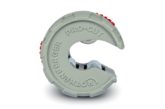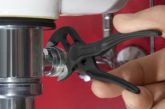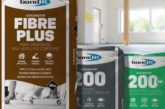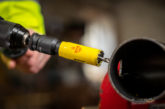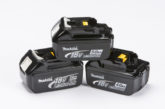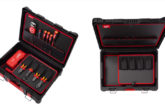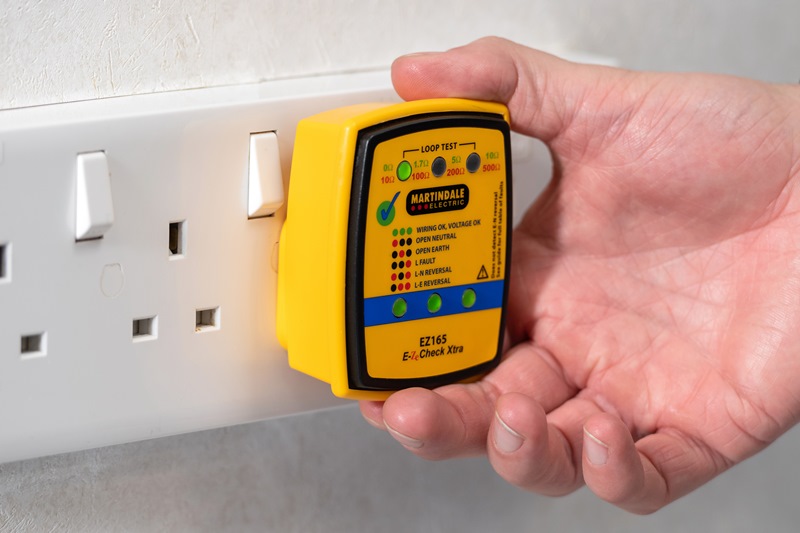
Steve Dunning, Managing Director of Martindale Electric, explains why a socket tester should be in every plumber’s toolbox.
Plumbing and heating installers often work in environments where electrical systems and appliances are a significant part of their daily tasks. Boilers, underfloor heating, kitchen fixtures, hot water systems: plumbers frequently encounter electrical systems and sockets, and the safety and proper functioning of these electrical components are paramount to protect both the plumber and the end-users. One essential tool that every plumber should have in their toolbox is a socket tester.
A fundamental step in ensuring the safe operation of electrical outlets is the verification of correct wiring. From simple 13 Amp outlets to industrial 3-phase sockets, proper wiring is crucial to prevent potential hazards.
Electrical hazards
Socket testers are convenient and easy-to-use devices that can quickly identify potentially unsafe conditions in sockets, acting as an initial indicator of potential electrical hazards and allowing plumbers and electricians to identify and rectify faults before they cause electrical shocks, fires, or damage to appliances or equipment.
Although never a replacement for a wider inspection and testing process, socket testers provide a rapid and straightforward method to assess the condition of electrical outlets without the need for complex equipment or extensive technical knowledge.
Socket testers perform polarity testing by checking if the earth, live and neutral wires are correctly connected. This basic function is present in all socket testers. However, some models offer additional features to enhance functionality. These features may include a buzzer in addition to LED indicators, providing both visual and audible confirmation of a properly wired socket. Some advanced socket testers can even indicate specific fault types through a combination of LED patterns, allowing for quick identification of issues.
Types of Socket Testers
There are two main categories of socket testers: simple and advanced. Simple socket testers, like the Martindale CP501, are ideal for electricians and plumbers alike. The Martindale CP501 classic check plug is the simplest option, specifically designed to ensure the correct wiring of 13A sockets. Featuring three bright long-life LEDs, it indicates wiring faults by the failure of one or more LEDs to illuminate, with the lit LED pattern indicating the type of detected fault. Its fail-safe system ensures that any unlit LED indicates a fault, with a clear display of the most common fault types on the front label.
The BZ101 includes a buzzer and is particularly useful for checking sockets that are not easily visible or located in hard-to-reach areas. It can also double as a basic fuse finder, ceasing its buzzer when the correct fuse is pulled. The new BZ701 is a development of the standard and bestselling BZ101. It adds a supply polarity test to ensure the incoming supply is correctly wired and Live + Neutral have not been swapped.
For more advanced options, two recently launched socket and non-trip earth loop testers, the EZ165 and EZ365 are compact but powerful testers which detect 28 fault conditions, check the mains voltage level and show how safe the earth wiring is by carrying out a non-trip earth loop test and indicating its value in six discrete ranges. This test is critical for ensuring the safety of a electrical system, as a low earth resistance is essential for safety disconnection devices to work properly and prevent electrocution when faults occur.
The EZ365 model also includes additional features, such as an incoming supply polarity swap test and the ability to trip test 30mA RCDs. The L-NE cross polarity test detects a serious fault condition that cannot be identified by many normal socket testers and is easily activated by using the touchpad on the EZ365. Faults are also indicated audibly on this model.
For commercial and industrial environments, socket testers like the Martindale CP201 can identify up to 28 fault conditions. These testers employ LED indicators to instantly signal wiring faults, with the specific pattern indicating the type of fault detected. The CP301 is designed for checking industrial sockets on 100V centre-tapped circuits, providing fail-safe fault indication through three bright LEDs. This model is also available as a 32A version to suit different applications.
While socket testers can be lifesavers by acting as initial fault indicators, they are not substitutes for full verification of wiring installations. Plumbers should follow the inspection and testing procedures outlined in Part 6 of BS 7671. This entails using a comprehensive set of test instruments that comply with the relevant parts of BS EN 61557, such as a multifunction electrical tester like the Martindale ET4000.
Plumbers dealing with electrical systems must prioritise safety to protect themselves and end-users. Socket testers play a crucial role in ensuring correct wiring, identifying potential faults, and preventing hazards. From simple models with audible indicators to advanced testers capable of detecting numerous fault conditions, socket testers provide an indispensable tool for plumbers.
However, it is important to remember that socket testers are part of a broader inspection and testing process outlined in industry standards. By incorporating socket testers into their toolkit and following the appropriate procedures, plumbers can contribute to a safer electrical environment for themselves and their customers.


